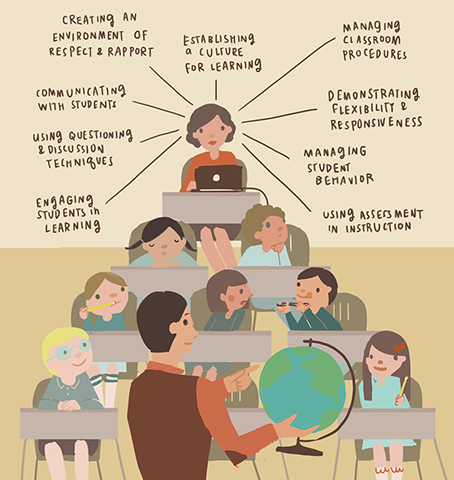Over the last several years, school districts across the country have been rolling out more rigorous and detailed evaluation rubrics along with systems to help administrators and teachers collaborate, collect evidence, and share performance ratings. If your school district (or school district that you are consulting for) is adopting a new teacher evaluation system to aid with collecting quality evidence, I have a single piece of advice for you. But you have to read to the end to get it.
 The new evaluation frameworks are significantly more complex than the evaluation practices they have replaced. The Danielson framework, for example, contains 22 potential components. These are containers or categories for what is commonly referred to as “evidence,” typically taken in the form of notes by administrators. In some school districts as many as 10 of these 22 components need to be captured during a single class period teacher observation. At the end of the day, in districts that have already rolled out new rubrics, the burden of evidence to support those rubrics falls heavily on the administrators.
The new evaluation frameworks are significantly more complex than the evaluation practices they have replaced. The Danielson framework, for example, contains 22 potential components. These are containers or categories for what is commonly referred to as “evidence,” typically taken in the form of notes by administrators. In some school districts as many as 10 of these 22 components need to be captured during a single class period teacher observation. At the end of the day, in districts that have already rolled out new rubrics, the burden of evidence to support those rubrics falls heavily on the administrators.
Now, I want to magically transport you and your laptop to the back of a classroom where it is your job to capture all applicable evidence for a complicated new framework, that has just been introduced to you, while the teacher works through the ebbs and flows of a lesson and the students fire off questions. Ready, set, go! The teacher begins the lesson and you have become the equivalent of a court reporter. How good are your shorthand typing skills? How dependable is your wi-fi? Can you really type up quality evidence and organize it on the spot, using new technology?
From my experience having personally trained hundreds of Principals and Assistant Principals on teacher evaluation tools, this may be the single most valuable lesson I’ve learned: How can you change years, or even decades, of note-taking habits over the course of a few hours and show administrators how to collect evidence in an entirely different way? Easy answer: you don’t.
If you are going to roll out detailed rubrics and build sophisticated systems to capture the evidence, that is just swell. But when it comes to actually capturing the notes in the classroom session, I urge you to empower the administrators to use their preferred methods of colleting notes, whatever those methods may be. Spreadsheet? Sure. Word processing? Of course. Pen and paper? Knock yourself out (though you will have to type it up later). The important thing is that the administrator is comfortable enough to capture notes quickly and this ensures that they aren’t missing valuable evidence while they try to tango with your new system or their potentially lousy wi-fi connection. The frameworks have likely changed, so I don’t mean to imply that the quality and content of notes captured by the administrator don’t have to change: they do. What I am proposing is that you don’t handicap them with a single tool in the fast-paced environment of classroom observation.
You can and should design a system this way. We have done such a thing with Truenorthlogic, who has rolled out their software to some of the largest school districts in the country. Evidence can be copied and pasted from multiple sources. Splitting up the evidence and grouping it by the rubric is incredibly flexible and doesn’t have to be done on the spot in the classroom.
When we piloted the teacher evaluation system at the Chicago Public Schools, we first proposed that administrators replace their previous evidence collection entirely and fire up their laptops and tablets to collect evidence directly in the new system. This did not go over nearly as well as our adjusted approach in the district-wide rollout, where we adopted the “take notes however you like” approach. By then, we had learned that administrators need to be empowered to collect evidence using their preferred method. We need their brain power focused primarily on capturing quality, relevant evidence to their new framework, not on navigating new technology. As long as they can turn around and input that evidence in the system efficiently and share it with the teacher by the required deadline, more power to them. Everyone wins.
Photo by Julia Kuo
Leave a Reply
The comments are closed.